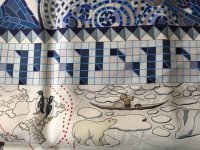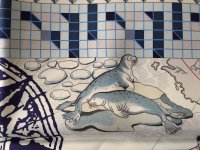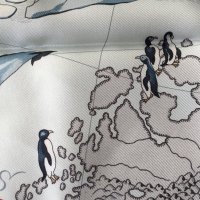22 December 2019 - Antiquity:
Scarves which depict historical events or were issued to celebrate an important event or anniversary.
Happy Sunday, dear Scarfies! In this joyous season filled with endearing family traditions and meaningful celebrations, we embark on a fun and wonderful week on SOTD.
This week we will explore those special scarves in our collections that illustrate a historical or cultural event, epoch, notable figure, or work of art. We will also share those silks in our collections that commemorate a significant anniversary or special feast or celebration, including those that were issued as special and/or commemorative editions.
I will begin by sharing A la Gloire de Guillaume by Loic Dubigeon. Inspired by the legendary 11th century Bayeux Tapestry, Dubigeon’s design closely duplicates the style and illustrations of the historic textile. The embroidered scenes on the original piece depict personages and vignettes from the Battle of Hastings. Dubigeon divides the square into segments that resemble a pastiche fashioned from sections of the medieval masterpiece. So, not only is this carré inspired by a significant work of art, but like the work of art that inspired it, it illustrates a significant historical event.
View attachment 4620890
View attachment 4620891
Next, is Cavaliers d’Or, designed by Vladimir Rybaltchenko in 1975 as a special commission to accompany the art exhibit from the same year, “From the Land of the Scythians” at New York’s Metropolitan Museum of Art. The exhibition consisted of hundreds of objects created by Scythians and artisans from other ancient civilizations occupying territories north of the Black Sea which are now part of Russia. These amazing pieces are part of the permanent collection of Russia’s L’Hermitage Museum and this collaboration was an historic event as it marked the beginning of important cultural exchanges between the US and the Soviet Union. These pictures with the scarf were taken at L’Hermitage this past summer.
View attachment 4620898
View attachment 4620899
Annie Faivre’s Promenade de Platon was inspired by ancient Greek philosopher and sage, Plato. In her imaginary landscape, the artist envisions a morning walk taken by Plato in the gardens of Akademia. It was in that setting that he envisioned and founded his celebrated Academy in 387 BC. The carré depicts various scenes, including an image of Plato and his dog, vignettes from the early Panhellenic games, and various figures inspired by the style and iconography of legendary ancient Greek vase paintings.
View attachment 4620892
View attachment 4620889
One of my favorite Hermès carrés is Hubert de Watrigant’s Feria de Sevilla. In this design, the artist depicts scenes and vignettes from the popular annual Andalusian fair. This beautiful piece, celebrating one of Spain’s most important cultural/folkloric events, honors the rich heritage and traditions of the Spanish people. The design also pays homage to Spain’s legendary equestrian heritage.
View attachment 4620893
View attachment 4620894
And, finally, Michel Duchesne’s festive Feux d’Artifice, which Hermès issued in 1987 to celebrate the firm’s 150th anniversary. Part of the celebrations that year included a fireworks display held by Hermès in the heart of Paris. This design features a costumed rider holding fireworks riding a majestic horse wearing an elaborate bridle and saddle and adorned with golden tassels, looking much like the horses and riders en parade at the event. The plates used to create this scarf were destroyed making it is impossible to reissue, adding to the uniqueness and value of this wonderful design.
View attachment 4620896
View attachment 4620897
This promises to be such a fun and inspirational week. I am very much looking forward to seeing all the wonderful silks that will be shared.

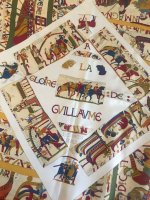

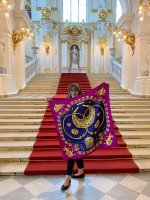
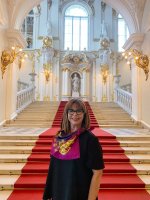

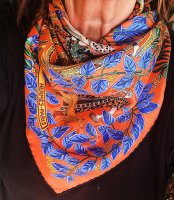
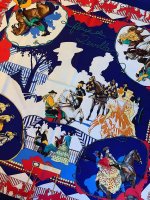

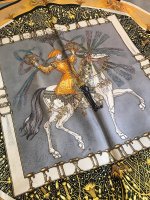




 How I love your JdL
How I love your JdL 


